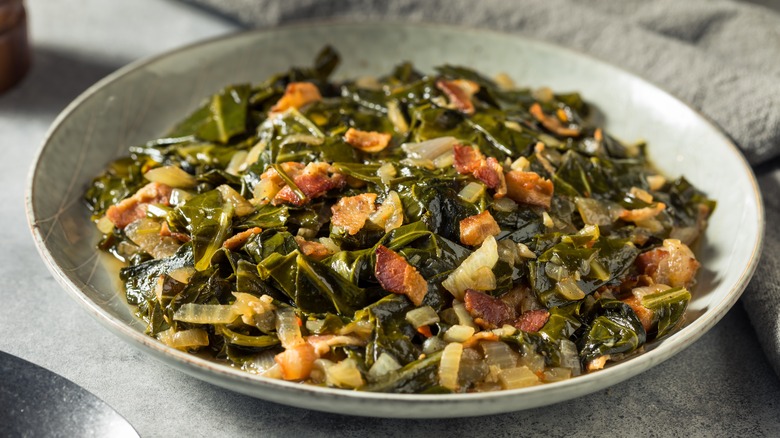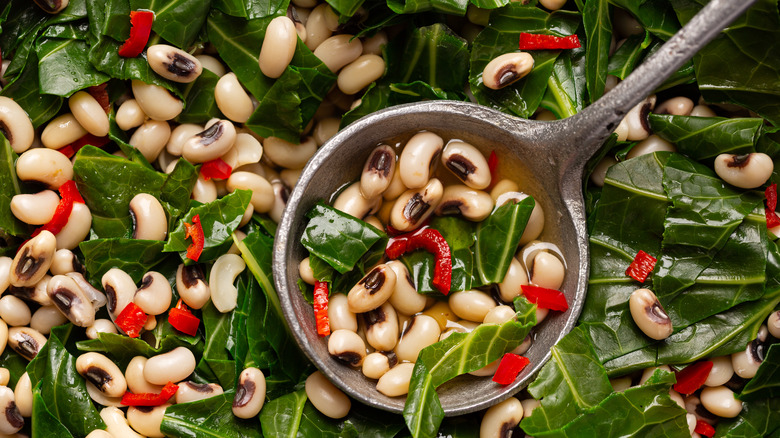Why Collard Greens Are A Beloved New Year's Day Tradition
The tradition of eating collard greens on New Year's Day is deeply rooted in the cultural tapestry of the American South, particularly among African Americans. This culinary custom carries historical significance, dating back to the time of slavery, and has since become a cherished practice for welcoming the new year with hopes of prosperity and resilience.
Enslaved Africans, who were kidnapped and brought to the American South, carried with them rich traditions that helped sustain them during captivity. In their new environment, they encountered European ingredients — including collard greens — and the European customs of consuming symbolic foods for good luck in the new year. Collard greens, along with other cruciferous leaves like mustard and turnip greens, quickly became integral both to this evolving tradition and African American diets. Through a process of adaptation and innovation, African Americans transformed these European ingredients into dishes that reflected their own cultural identity. Collard greens, once foreign, became a staple in Southern African American culinary tradition, carrying with them layers of symbolism that transcended their humble origins.
The symbolism of collard greens as a harbinger of prosperity can be traced to their visual resemblance to paper money. The large, flat leaves of collard greens bear a passing resemblance to currency notes, creating an association between the vegetable and wealth. Additionally, the hardiness of collard greens reflects the resilience of the African-American community, making them a symbol of hope and endurance in the face of adversity.
Greens and peas
The preparation of collard greens for New Year's Day is almost as important as the symbolism behind them. The cooking process involves a methodical approach, with an emphasis on low and slow cooking to extract the rich flavors from the greens. Often, ham hock, salt pork, or even smoked turkey are added to the pot, infusing the dish with a savory depth that complements the hearty nature of collard greens.
The resulting potlikker — the flavorful broth left after cooking collard greens — is a prized element of the dish. To fully savor this liquid essence, collard greens are traditionally served with cornbread. The cornbread serves not only as a delicious accompaniment but also as a means to sop up the potlikker, ensuring that no part of the rich broth goes to waste.
In addition to collard greens, New Year's Day feasts often include Hoppin' John or black-eyed peas, another dish laden with symbolism for prosperity and good fortune. Hoppin' John is derived from the Gullah culture of South Carolina's Lowcountry and is traditionally made with rice and Carolina field peas, a creamier cousin of black-eyed peas. The tradition of eating those goes even further back to Jewish traditions surrounding Rosh Hashanah, the Jewish New Year celebration. The combination of collard greens, Hoppin' John, and cornbread creates a culinary tableau of hope and abundance, reflecting the community's resilience and aspirations for a better future.

